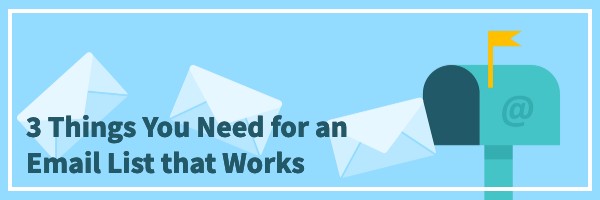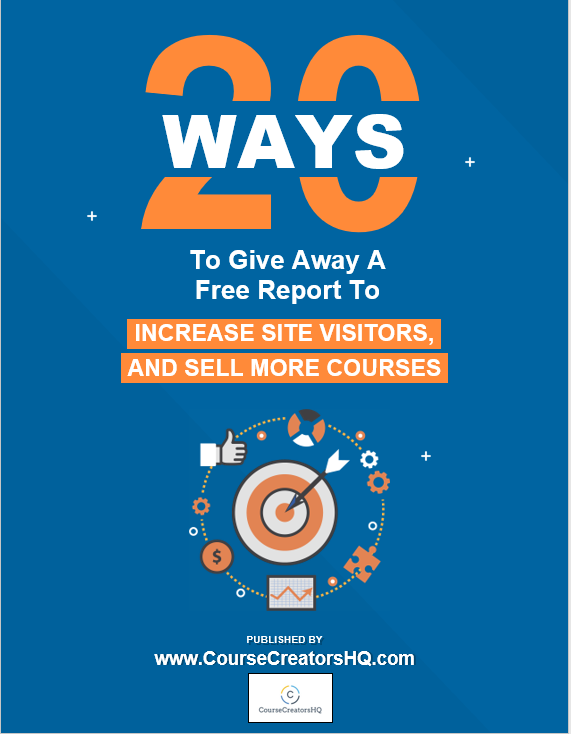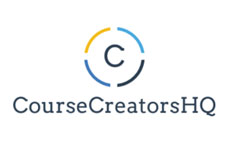
Only 3 out of every 100 people who stumble across you are ready to buy your course at that moment.
But wait, let’s not leave the other 97 without snagging them and keeping them in your world until they are ready to buy.
So let’s get your foundation in place to help them move forward and build your email list.
Foundation Brick 1. Give Away a Juicy Freebie
You want to give away a free gift that your audience will love to receive. It can be lots of different formats: a special report, a resource guide, an audio, a video.
Ideally your freebie is something that your perfect student needs early in their process – right before they need your course.
It gets them started, solves one early problem, and leaves them wanting the rest of what you offer in your course.
For example, a watercolor artist may give away a supplies list of the top paints, paintbrushes and tools (before you can paint, you need supplies). Or a baking instructor may give away a top 10 recipes list.

So spend a few minutes thinking about the journey your student takes and what they need first, second and third. Create your freebie to answer one of their early questions, and get them started working with you.
Since I know my students need to build their list so I created a freebie that gives them 20 different ways to promote a free report they are giving away.
Foundation Brick 2. Have Your Tech In Place
To build your email list, you need a couple technology pieces in place.
First, you need an email newsletter software. It’s sometimes called a CRM (or Customer Relationship Manager). This tool lets you gather names and emails plus gives you a way to send out broadcast emails each week to your subscribers.
Many of the tools also let you set up automatic email sequences that go out when someone signs up to your list (for example, you could send 5 days worth of lessons to let your students get to know you).
My favorite tool for course creators right now is ConvertKit for two reasons: it has a free option so you can get started before your course is selling and it has built-in landing pages.
Stay away from Mailchimp. I know a lot of people use it, but it doesn’t have some of these important features. I was using it with one of my clients, and we couldn’t easily have more than one free offer that we gave away.
Second, you need a landing page for each of your freebies. These are pages where the only thing people can do is sign up for your email list. They are not part of your website. They are standalone pages. Here is an example of one of mine. You can see how it doesn’t have any navigation or places for people to get distracted. It has one focus and one purpose: sign up or not.
ConvertKit includes landing pages, but if you are using a different tool, you may need a landing page software that you connect to your email newsletter software. I create all of mine using Leadpages because I can put the pages together in a flash. It saves me so much time. Plus you can attach your freebie and have it automatically sent to people who sign up for your email list. It also tracks statistics so you know how many people visit your page and how many actually sign up.
You can also put your freebie into a free Dropbox account and then share the link with your subscribers after they sign up. Your email newsletter software should let you automatically send a welcome message to new subscribers and you can include the link in that email.
Foundation Brick 3. Traffic to See Your Landing Page
The good news is there are so many ways to send traffic to your landing page. The bad news is there are so many ways to send traffic to your landing page. 😉
Knowing which ones to use is part of your challenge to figure out when marketing your course.
Here are a couple to get you started:
- Use promo days in Facebook groups to promote and offer your freebies. I usually get 10-20 new subscribers each week from this strategy.
- Contact website owners in your area of expertise and ask them if they would like to share your freebie with their audience. Then you send them to your landing page to sign up for your email list.
- Be a guest on podcasts and offer your freebie to the audience.
- Put your freebie in your email signature so anyone who opens your regular emails will also see it.
- Share a link to your landing page on your Facebook page or your Instagram bio so you can convert your social media followers into email subscribers.
My clients who are much further along the path also pay others to send an email which shares their freebie to get more subscribers. Usually this starts around $1,000 so you do need some budget to use this technique.
Your challenge is to test and test and test different options – and keep working at them until you find the ones that work for your audience.
Keep tweaking and changing. We have found that just changing one or two words on a landing page can make the conversion much higher.
With these three pieces in place, you can start building your email list (and find some more perfect students for your course)! You’ll snag that 97% of people so when they are ready to buy, you are there for them.

